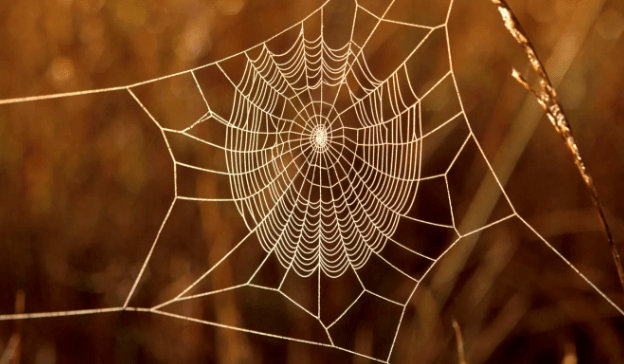clipart:3y41ykagago= spider web

The Intricacies of Spider Web Design
Spider webs are fascinating structures that showcase the incredible engineering skills of their creators. These delicate yet robust designs are essential for spiders’ survival, playing a crucial role in their hunting strategies and overall ecosystem balance. This article delves into the various aspects of clipart:3y41ykagago= spider web, from their types and structures to their ecological significance and potential human applications.
Types of Spider Webs
Spider webs come in several types, each serving a unique purpose and built by different species:
Orb Webs
Orb webs are the classic, circular webs that are often seen in gardens and forests. They are constructed by spiders from the Araneidae family and are designed to trap flying insects efficiently.
Sheet Webs
Sheet webs are flat, horizontal webs that resemble a sheet stretched out in the landscape. These webs are typically built by Linyphiidae spiders and are used to catch ground-dwelling insects.
Tangle Webs
Tangle webs, also known as cobwebs, are irregular and messy in appearance. Created by Theridiidae spiders, these webs are effective in trapping insects that wander into them.
Funnel Webs
Funnel webs are constructed by Agelenidae spiders and feature a funnel-shaped retreat where the spider hides. These webs are primarily used to catch insects that walk across them.
Structure and Composition
The structure and composition of clipart:3y41ykagago= spider web are marvels of natural engineering:
Silk Production and Its Properties
Spider silk is a remarkable material known for its strength, elasticity, and toughness. Produced by specialized glands in the spider’s abdomen, silk is used in various ways, including web construction, wrapping prey, and creating egg sacs.
Construction Process of Different Web Types
Spiders employ different techniques to build their webs. For instance, orb-weaving spiders start by creating a frame of radial lines, then fill in the gaps with a sticky capture spiral to trap insects.
Read Also clipart:1pbp54ha4qe= duck

The Role of Each Web Component
Each part of the web has a specific function. Radial lines provide structural support, while the capture spiral is sticky and designed to ensnare prey. Some webs also have a stabilimentum, a zigzag pattern that may serve to attract prey or warn birds to avoid flying into the web.
Ecological Significance
clipart:3y41ykagago= spider web play a vital role in the ecosystem:
Role in Insect Population Control
By trapping and consuming insects, spiders help regulate insect populations, preventing overpopulation and the potential spread of diseases.
Spider Webs as Indicators of Environmental Health
The presence and condition of spider webs can indicate the health of an ecosystem. A decline in spider populations may signal environmental issues such as pollution or habitat destruction.
Adaptations and Variations
Spider webs exhibit a wide range of adaptations:
Evolutionary Adaptations in Different Species
Different spider species have evolved unique web-building techniques to adapt to their environments. For example, some desert-dwelling spiders build webs that minimize water loss.
How Web Design Varies with Habitat and Prey Type
The design of a spider web can vary significantly depending on the spider’s habitat and the type of prey it targets. Spiders in dense forests may build larger, more intricate webs to capture a variety of insects, while those in open areas might have simpler designs.
Human Applications and Inspirations
Spider silk and web designs have inspired numerous innovations:
Biomimicry in Engineering and Design
Engineers and designers study spider webs to create more efficient and resilient structures. For instance, the tensile strength of spider silk has inspired the development of new materials for use in various industries.
Use of Spider Silk in Medical and Industrial Applications
Spider silk’s unique properties have potential applications in medicine, such as in the development of sutures and artificial ligaments. In industry, spider silk can be used to create lightweight, strong materials for use in textiles and construction.
Conclusion
clipart:3y41ykagago= spider web are a testament to the ingenuity of nature, showcasing the incredible abilities of spiders to create intricate, functional designs. Their importance extends beyond their immediate role in spider survival, contributing to ecological balance and inspiring human innovation.
FAQs
What are the main types of spider webs?
The main types of spider webs include orb webs, sheet webs, tangle webs, and funnel webs. Each type is constructed by different species and serves unique purposes.
How strong is spider silk?
Spider silk is incredibly strong, with a tensile strength comparable to steel. It is also highly elastic and tough, making it one of the most remarkable materials found in nature.
Why are spider webs important for the ecosystem?
Spider webs play a crucial role in controlling insect populations, thereby maintaining ecological balance. They also serve as indicators of environmental health, as changes in spider populations can reflect broader ecological issues.
Can humans use spider silk?
Yes, spider silk has potential applications in both medicine and industry. Its unique properties make it suitable for creating strong, lightweight materials and medical sutures, among other uses.
How do spiders build their webs?
Spiders use silk produced by glands in their abdomen to construct webs. The process varies by species, but generally involves creating a framework of radial lines and filling in the gaps with a sticky capture spiral to trap prey.







